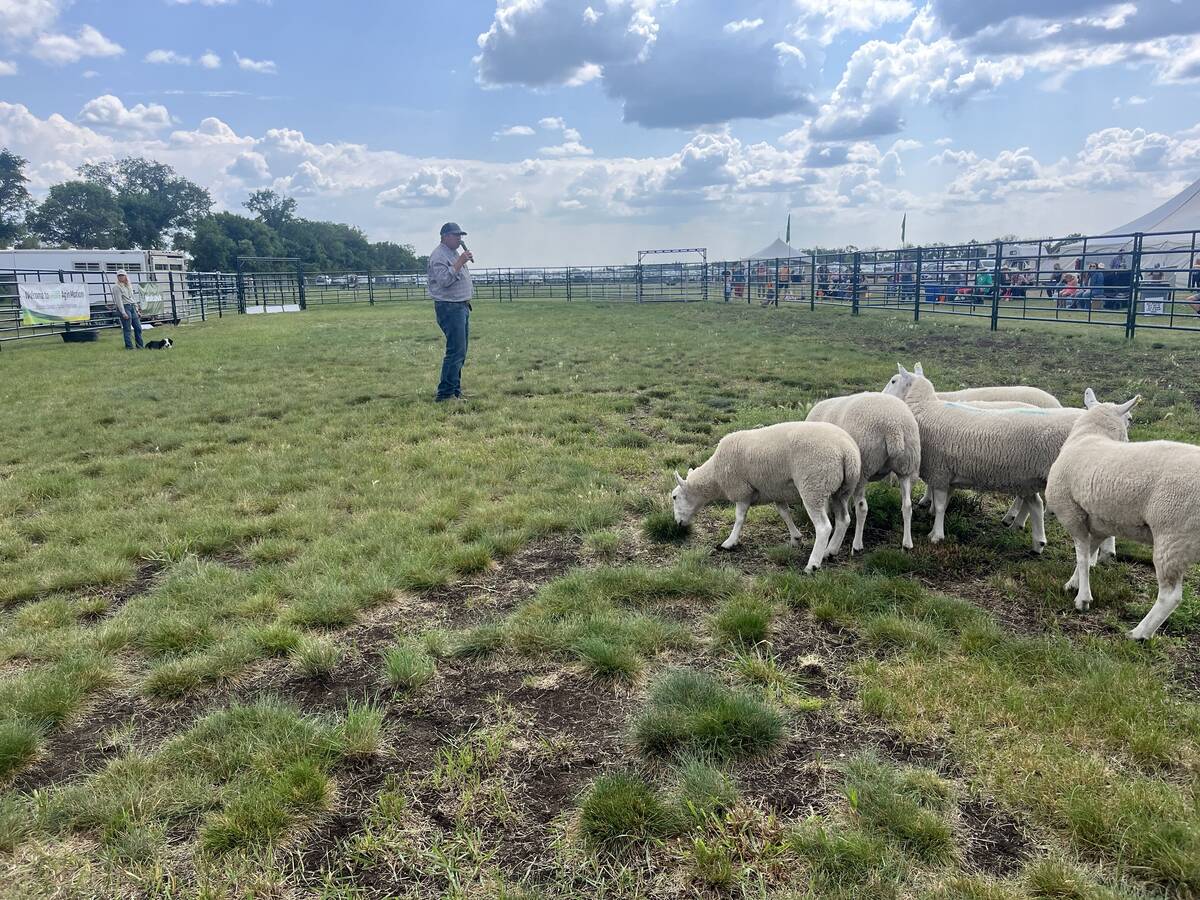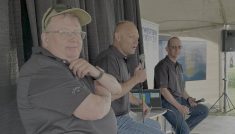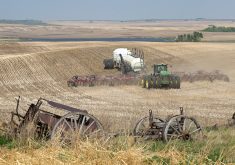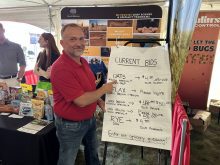Flood prevention and cleanup work in two low-lying regions of Saskatchewan could cost the province close to $19 million this year, say officials from Saskatchewan Watershed Authority.
At Fishing Lake, a popular resort area 250 kilometres east of Saskatoon, sandbagging, berm improvements, environmental compensation and the construction of a drainage channel will cost the authority $8.5 million, said the SWA’s Jim Waggoner.
At Waldsea, Houghton and Deadmoose lakes near Humboldt, Sask., the SWA is expecting a bill as high as $10 million, said Dale Hjertaas, the SWA’s executive director of policy and communications.
Read Also

Stock dogs show off herding skills at Ag in Motion
Stock dogs draw a crowd at Ag in Motion. Border collies and other herding breeds are well known for the work they do on the farm.
About $5 million will compensate flooded landowners for the loss of 9,000 to 10,000 acres of farmland surrounding the three lakes.
Another $3 to $4 million will be required to buy, move or destroy 50 privately owned cabins at Waldsea Lake.
Water levels in Waldsea are expected to rise dramatically this spring when the authority removes berms that were originally built to protect Waldsea Lake Regional Park from flooding.
Another $1 million will be needed to reroute a portion of Grid Road 777, a major grid that was flooded when the federal government ordered the province to block the flow of water from Houghton Lake into nearby Lenore Lake.
“We’re looking at … somewhere in the neighbourhood of $10 million (for Waldsea) when all is said and done, (including) compensation for road issues, moving everybody out and compensating landowners who were flooded,” Hjertaas said.
Waldsea, Houghton and Deadmoose are part of the Lenore Lake drainage basin, a closed system with no natural outlet.
Last year, municipalities and landowners around Lenore Lake lobbied successfully to stop water from flowing out of Houghton Lake into Lenore Lake.
The group argued that saline water flowing from Houghton into Lenore would hurt Lenore’s fish stocks.
The blockage caused significant flooding upstream from Lenore in Houghton and Deadmoose.
In response, the SWA has drawn up plans to drain water around Houghton and Deadmoose back into Waldsea.
A few weeks ago, work crews moved the last cabins out of Waldsea Lake Regional Park, which was decommissioned earlier this year.
Berms protecting the park from flood waters will be removed this spring, reducing flooding pressure on farmland around Deadmoose and Houghton.
Elsewhere in the basin, farmers around Middle Lake and Basin Lake, further downstream from Lenore, are also coping with rising water levels and the loss of thousands of acres of farmland.
Hjertaas said the Lenore Lake basin has not experienced water levels this high since the authority began keeping records in the area several decades ago.
Although significant flooding is anticipated around Lenore, Middle and Basin, the watershed authority won’t compensate landowners in those areas, Hjertaas said.
“That’s considered natural flooding and we don’t get into compensating for natural flooding,” he said.
“The reason we’re (compensating landowners around Deadmoose, Houghton and Waldsea) is because the federal order forced us to block the natural flow (into Lenore), which then makes us responsible for the flooding caused by that water.”
The watershed authority might be able to sidestep the $10 million cost associated with flooding in the Lenore Lake basin.
It is challenging the legality of the federal order that stopped the flow of water into Lenore.
There is a strong likelihood the fed-e ral government will become responsible for flood-related costs If the legal challenge is successful.
Either way, areas upstream and downstream from Lenore are expecting the loss of thousands of acres of land that just a few years ago were used for grazing and crop production.
The watershed authority is negotiating long-term flooding easements with as many as 70 families in the area. In some cases, it will buy land outright.
“Whether it’s a permanent easement or an outright purchase … one way or the other we’ll end up paying for the land,” Hjertaas said.
Some families stand to lose a significant portion of their land base, he added.
Farm owners who lose enough land to flooding may be given the option of selling their remaining land and getting out of farming completely.
“If you lose 70 percent of your land base, you’re probably no longer a viable farm, which … could see us buying some land that’s not flooded as well,” Hjertaas said.
SWA’s court challenge was expected to be heard this year, but appeals are likely to delay the case for several months.

















